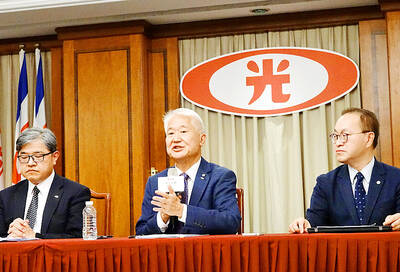President Ma Ying-jeou (馬英九) yesterday told the Tourism Bureau to remove the simplified Chinese version from its Web site, saying all government agencies should use traditional Chinese characters in official documents and on the Internet.
The president’s instructions came in the wake of a dispute over the use of simplified characters to cater to an expected influx of Chinese free independent travelers (FITs).
The Tourism Bureau had provided simplified Chinese among other languages on its Web site. The simplified Chinese version was removed yesterday morning.
“To maintain our role as the pioneer in Chinese culture, all government bodies should use traditional Chinese in official documents and on their Web sites, so that people around the world can learn about the beauty of traditional characters,” Presidential Office spokesman Fan Chiang Tai-chi (范姜泰基) quoted Ma as saying.
On Tuesday, the Executive Yuan urged retailers and other businesses to refrain from replacing traditional characters with simplified characters in product descriptions or on menus to cater to FITs.
Opening Taiwan to FITs is the latest move by Taiwan and China to enhance cross-strait exchanges. On Sunday, Chinese National Tourism Administration Chairman Shao Qiwei (邵琪偉) announced that the program would start on June 28 and would initially be open to residents of Beijing, Shanghai and Xiamen.
China’s unilateral announcement of an official launch date caught Taiwan by surprise. On Monday, Mainland Affairs Council Deputy Minister Liu Te-shun (劉德勳) said work still needed to be done, adding that if everything proceeded smoothly, FITs would be able to visit before June 28.
Fan Chiang yesterday repeated the Executive Yuan’s call for businesses to stick to traditional characters, saying Taiwan has opened its doors to Chinese tourists for three years and most have no trouble reading traditional characters.
“Chinese tourists come to Taiwan to experience the different culture and traditions here, and we should not take this experience away from them,” Fan Chiang said.

The combined effect of the monsoon, the outer rim of Typhoon Fengshen and a low-pressure system is expected to bring significant rainfall this week to various parts of the nation, the Central Weather Administration (CWA) said. The heaviest rain is expected to occur today and tomorrow, with torrential rain expected in Keelung’s north coast, Yilan and the mountainous regions of Taipei and New Taipei City, the CWA said. Rivers could rise rapidly, and residents should stay away from riverbanks and avoid going to the mountains or engaging in water activities, it said. Scattered showers are expected today in central and

COOPERATION: Taiwan is aligning closely with US strategic objectives on various matters, including China’s rare earths restrictions, the Ministry of Foreign Affairs said Taiwan could deal with China’s tightened export controls on rare earth metals by turning to “urban mining,” a researcher said yesterday. Rare earth metals, which are used in semiconductors and other electronic components, could be recovered from industrial or electronic waste to reduce reliance on imports, National Cheng Kung University Department of Resources Engineering professor Lee Cheng-han (李政翰) said. Despite their name, rare earth elements are not actually rare — their abundance in the Earth’s crust is relatively high, but they are dispersed, making extraction and refining energy-intensive and environmentally damaging, he said, adding that many countries have opted to

People can preregister to receive their NT$10,000 (US$325) cash distributed from the central government on Nov. 5 after President William Lai (賴清德) yesterday signed the Special Budget for Strengthening Economic, Social and National Security Resilience, the Executive Yuan told a news conference last night. The special budget, passed by the Legislative Yuan on Friday last week with a cash handout budget of NT$236 billion, was officially submitted to the Executive Yuan and the Presidential Office yesterday afternoon. People can register through the official Web site at https://10000.gov.tw to have the funds deposited into their bank accounts, withdraw the funds at automated teller

CONCESSION: A Shin Kong official said that the firm was ‘willing to contribute’ to the nation, as the move would enable Nvidia Crop to build its headquarters in Taiwan Shin Kong Life Insurance Co (新光人壽) yesterday said it would relinquish land-use rights, or known as surface rights, for two plots in Taipei’s Beitou District (北投), paving the way for Nvidia Corp to expand its office footprint in Taiwan. The insurer said it made the decision “in the interest of the nation’s greater good” and would not seek compensation from taxpayers for potential future losses, calling the move a gesture to resolve a months-long impasse among the insurer, the Taipei City Government and the US chip giant. “The decision was made on the condition that the Taipei City Government reimburses the related